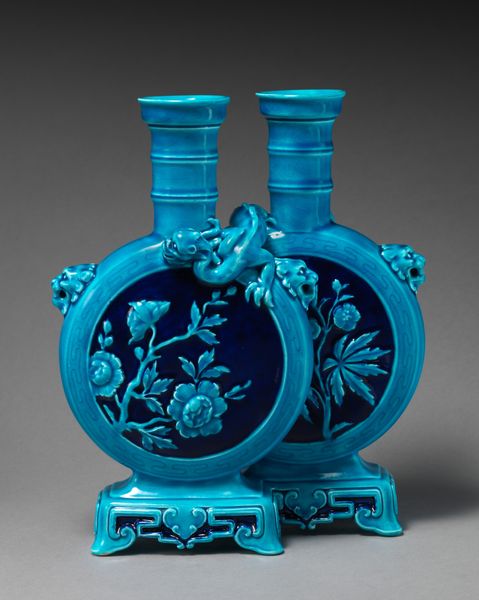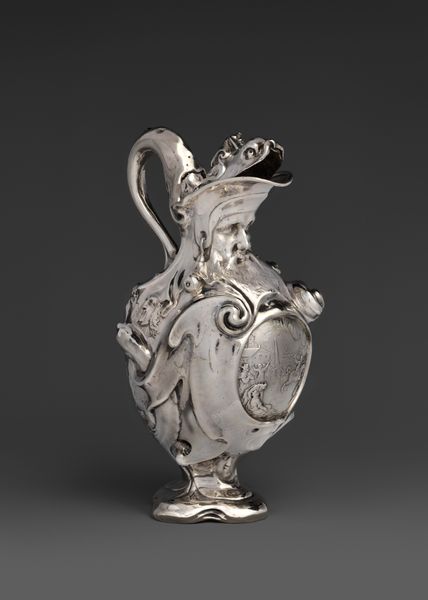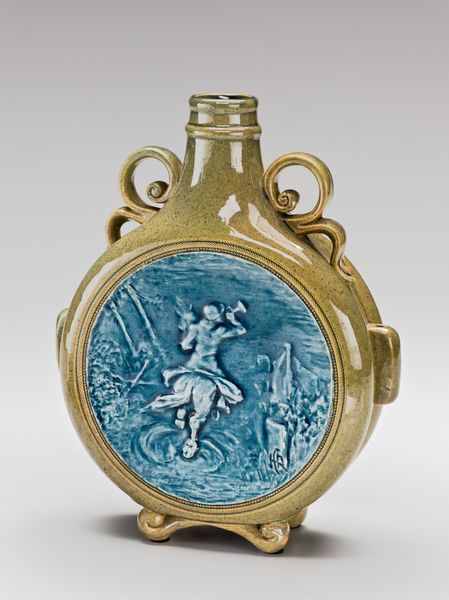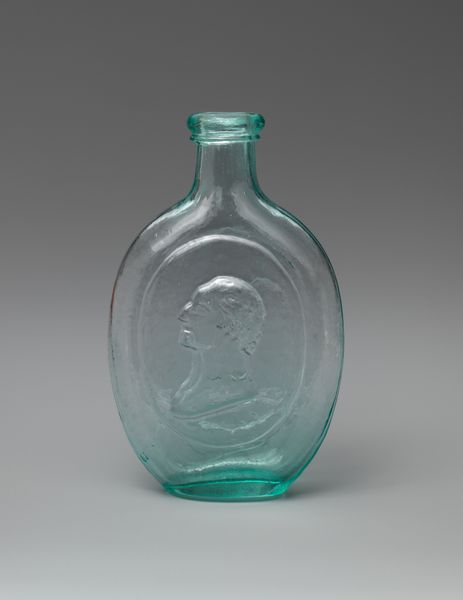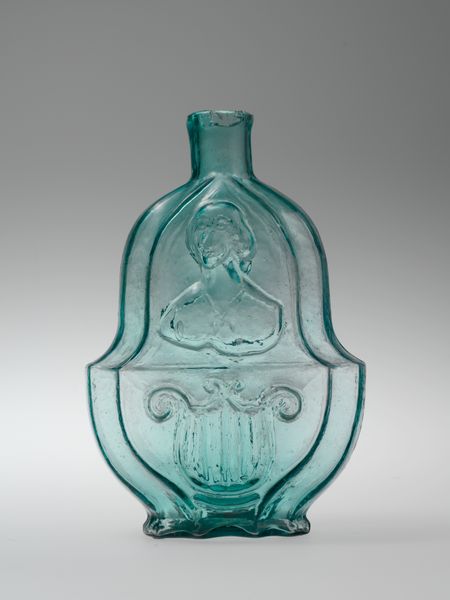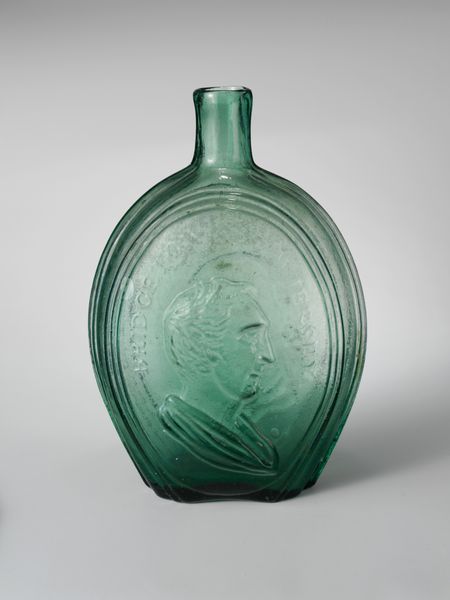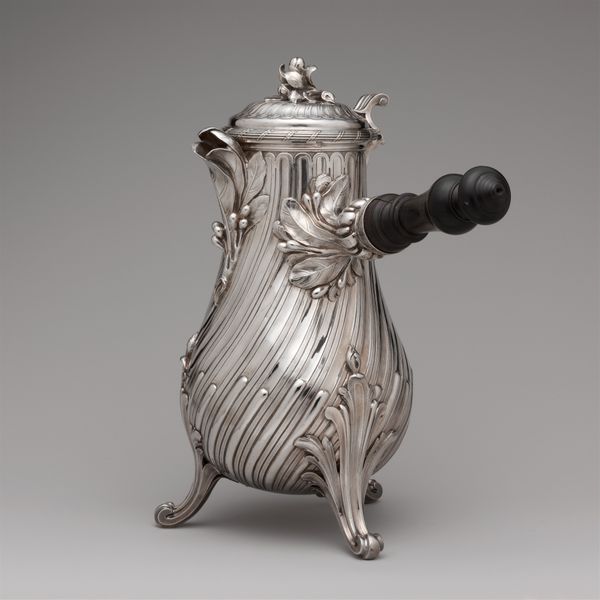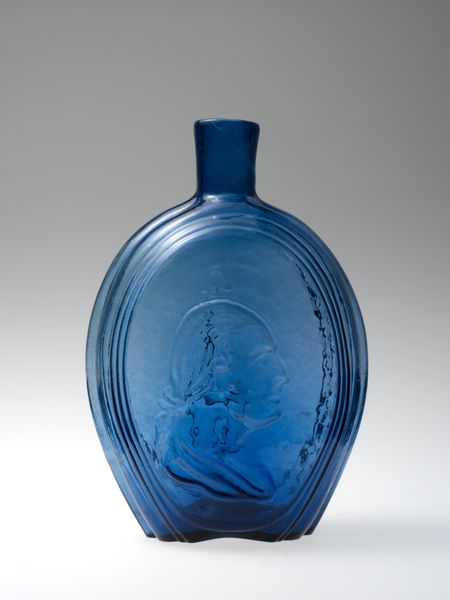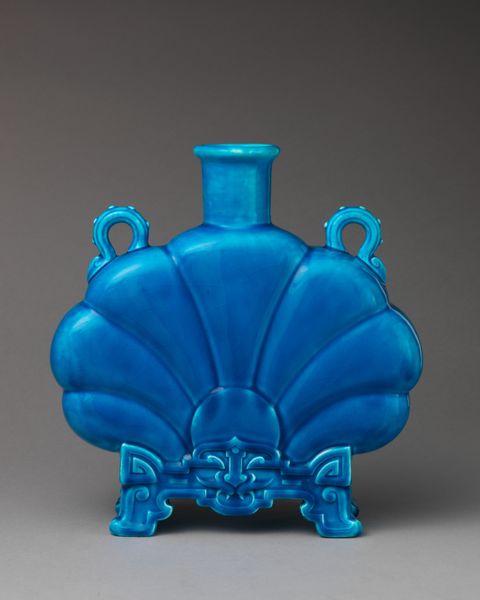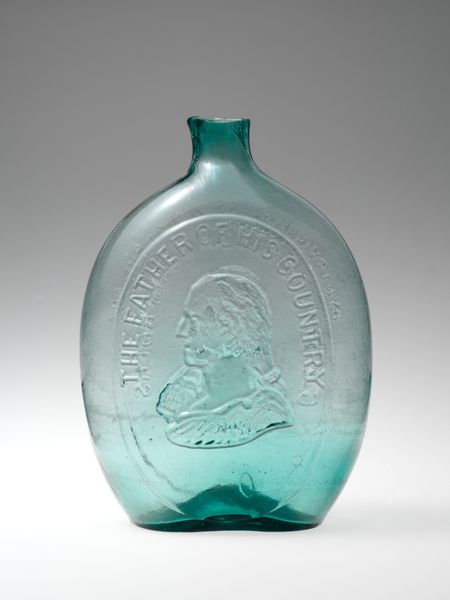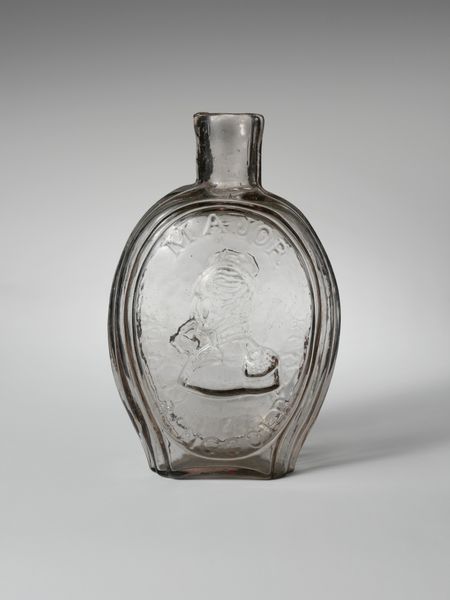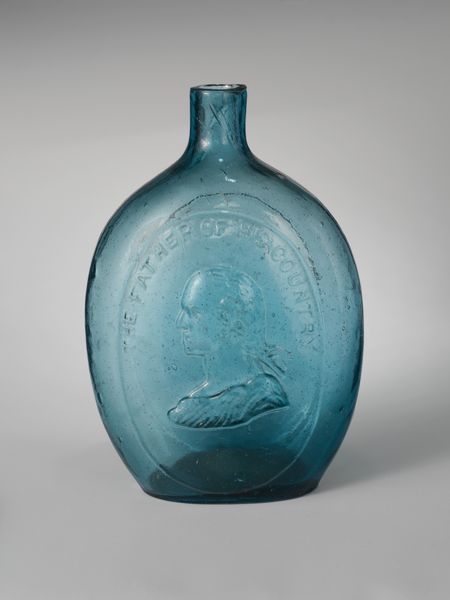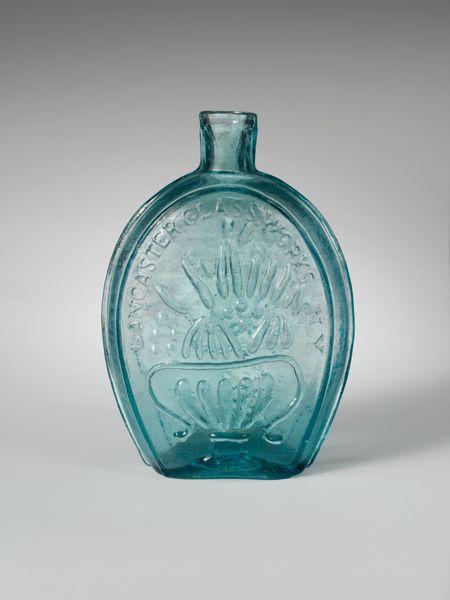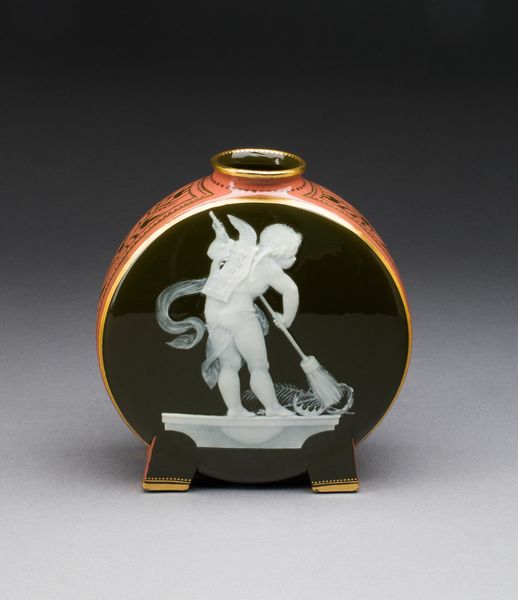
Dimensions: 9 1/4 x 7 3/8 in. (23.5 x 18.7 cm)
Copyright: Public Domain
Curator: Standing before us is a ceramic Pilgrim Flask, crafted between 1875 and 1883 by the Chelsea Keramic Art Works here in the United States. Editor: It's such a curious piece! The matte, teal glaze and low relief imagery give it an almost dreamlike quality. Curator: Absolutely. Chelsea Keramic emerged during the Arts and Crafts movement, striving to counter industrial production by celebrating handcrafted artistry and elevating traditionally 'lower' arts to stand alongside painting or sculpture. Think of the implications for class and labor embedded in such a claim! Editor: Right, and look at this particular example, the use of earthenware to mimic a traditional flask form used by travelers points directly to that tension between utility and art, design and manufacturing processes that defined the Arts and Crafts project. I am curious about their access to materials, where they source their clay. Curator: Exactly, consider the role of art and labor here. While evoking historical forms, the depiction of nature is so deliberate, a reflection of the era's values – idyllic rural life as an alternative to burgeoning industrialization and perhaps longing to recapture an environment they saw themselves divorced from, if one considers their target consumers, for instance. Editor: It's fascinating to consider that through the lens of social history. Given the rising consumerism and concerns about the social impact of industry in the late 19th century, it seems this work served not just as decor, but perhaps as a commentary. Also, how are we to think about water here as contained in a ceramic artwork? Does the representation refer to life giving access to essential materials? Curator: Perhaps. There's also the potential gendered dimension. The ceramic work done by women challenged accepted stereotypes about craft versus ‘high art’. Women, restricted from the academic path carved for most men in the world of fine art, established space for themselves within the craft community, and here you can look at social structures informing how a certain theme might have been understood by those actors and contemporary consumers. Editor: It’s this nexus of making and meaning. What’s striking to me is the fact that what appears, at first glance, to be purely decorative belies the work involved, labor and resources and decisions. These were people who took care with material and chose their work and it’s meaning. Curator: Indeed, engaging with it offers glimpses into social anxieties around labor and aesthetics in late 19th century America, reminding us that art and design always exist within a specific historical context. Editor: Well, thinking about this work from its production, its processes, and materials brings into a closer view this network of hands, this ecology of humans and material shaping the American artistic world in an earlier moment.
Comments
No comments
Be the first to comment and join the conversation on the ultimate creative platform.
